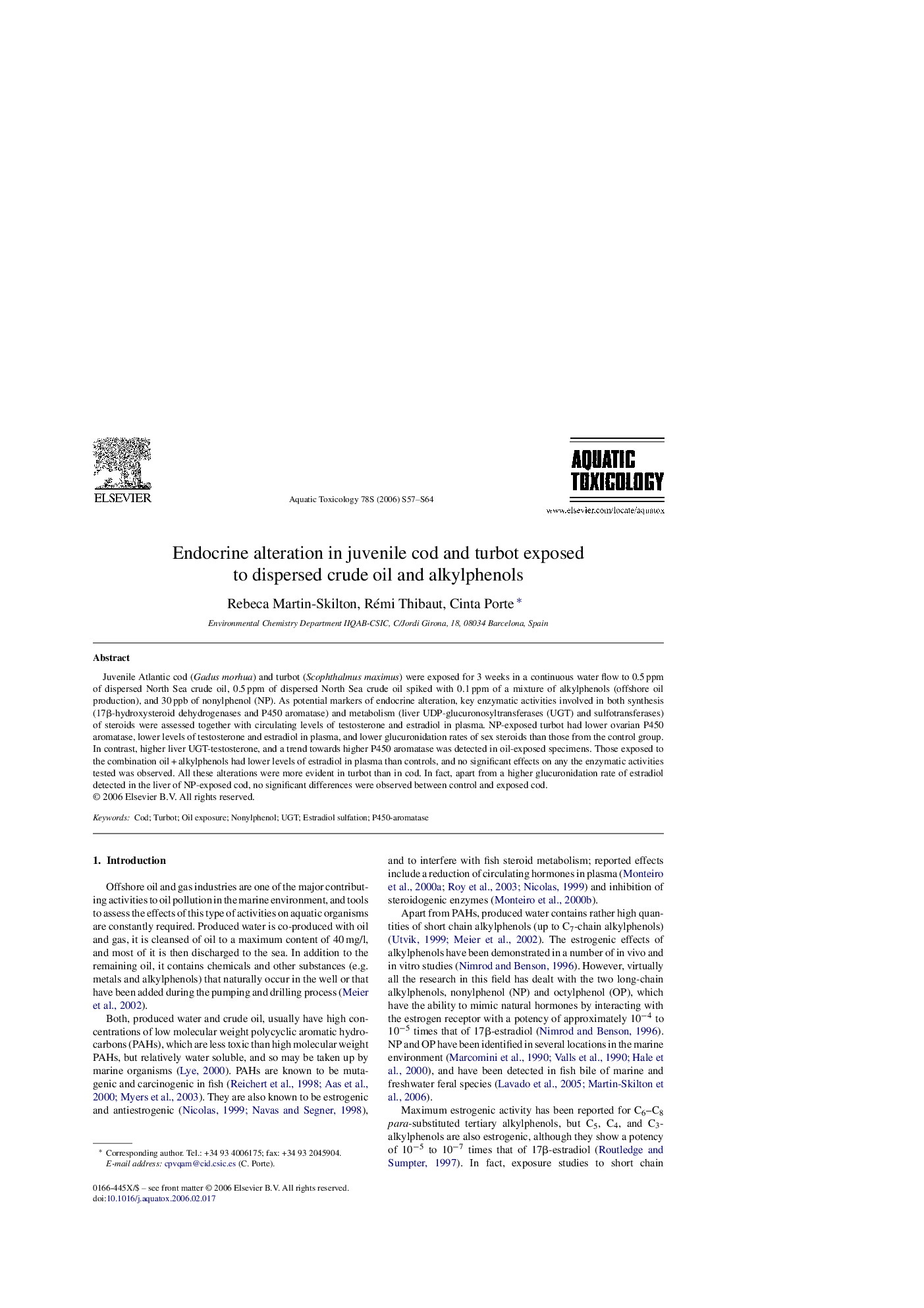| Article ID | Journal | Published Year | Pages | File Type |
|---|---|---|---|---|
| 4531344 | Aquatic Toxicology | 2006 | 8 Pages |
Juvenile Atlantic cod (Gadus morhua) and turbot (Scophthalmus maximus) were exposed for 3 weeks in a continuous water flow to 0.5 ppm of dispersed North Sea crude oil, 0.5 ppm of dispersed North Sea crude oil spiked with 0.1 ppm of a mixture of alkylphenols (offshore oil production), and 30 ppb of nonylphenol (NP). As potential markers of endocrine alteration, key enzymatic activities involved in both synthesis (17β-hydroxysteroid dehydrogenases and P450 aromatase) and metabolism (liver UDP-glucuronosyltransferases (UGT) and sulfotransferases) of steroids were assessed together with circulating levels of testosterone and estradiol in plasma. NP-exposed turbot had lower ovarian P450 aromatase, lower levels of testosterone and estradiol in plasma, and lower glucuronidation rates of sex steroids than those from the control group. In contrast, higher liver UGT-testosterone, and a trend towards higher P450 aromatase was detected in oil-exposed specimens. Those exposed to the combination oil + alkylphenols had lower levels of estradiol in plasma than controls, and no significant effects on any the enzymatic activities tested was observed. All these alterations were more evident in turbot than in cod. In fact, apart from a higher glucuronidation rate of estradiol detected in the liver of NP-exposed cod, no significant differences were observed between control and exposed cod.
